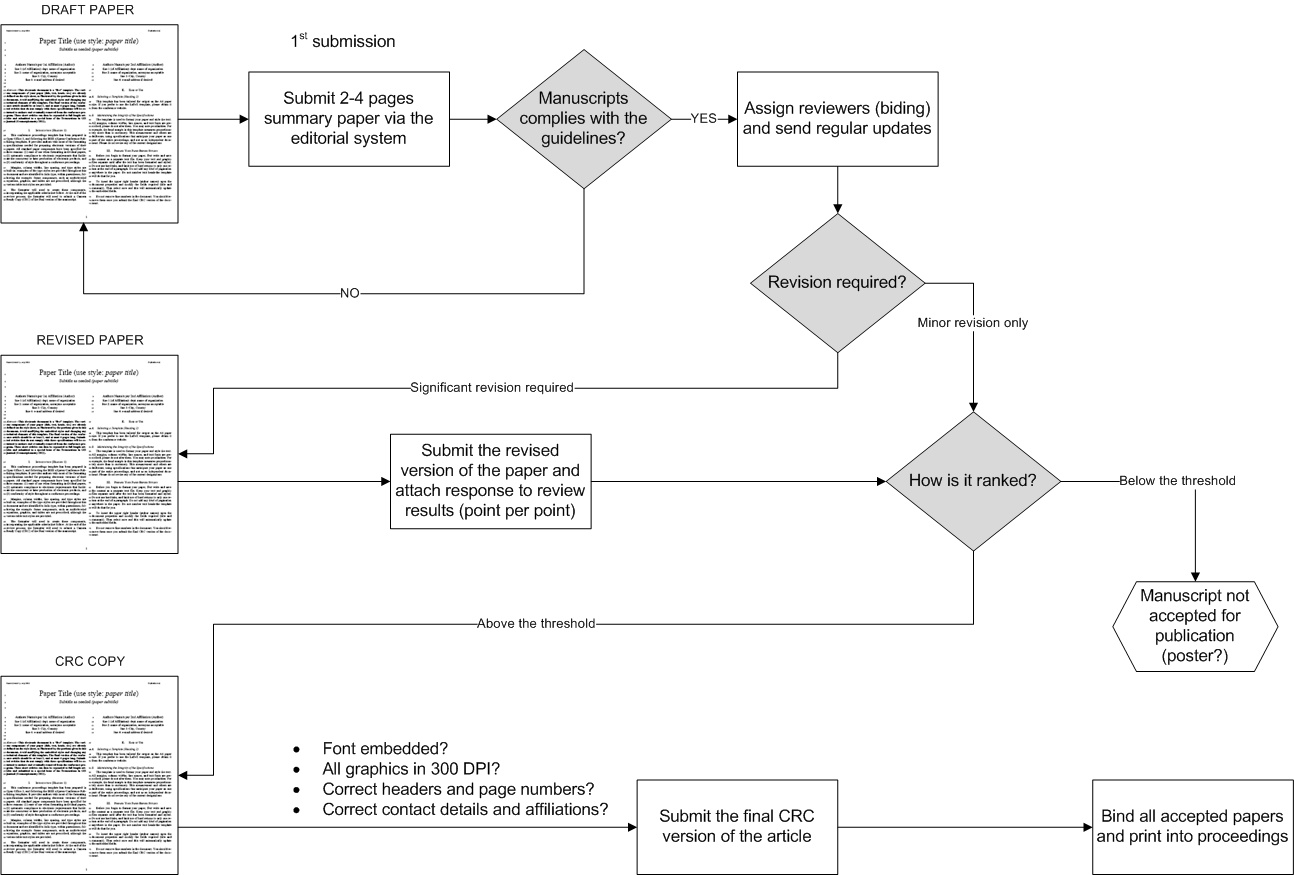Published: Feb 10, 2018 by ISG Board
This page contains some basic instructions on how to prepare and submit a Camera Ready Copy (CRC) of the short papers for the Geomorphometry conference. We typically do not provide any technical support, which means that each author is responsible to format the article following the preparation guidelines and submit a CRC version of manuscript (see an example). Submissions that do not closely follow the manuscript preparation guidelines might be removed from the revision process. The publication process is illustrated in the graph below:

Templates:
Use one of the following templates to prepare your 2-4 pages summary paper (read also the manuscript preparation guidelines):
General instructions:
- Do not submit poorly prepared, incomplete and/or already used materials. Your paper will be reviewed by three members of the scientific committee.
- Extended abstracts must be original works by the authors, not be currently under review in the same form by another outlet and not submitted elsewhere prior to the notification date.
- Closely follow the manuscript preparation guidelines. Manuscripts that do not comply with the guidelines will be removed from the review process.
- The paper has to be at least 2 and at most 4 pages long.
- We accept only font-enbeded, high-quality graphics PDF versions of the manuscript. Do not submit MS Word documents or similar. To generate a PDF version of the article, please consider using CutePDF Writer or similar freeware.
- Closely follow the indicated deadlines. We take no responsibility for delayed or incomplete reviews.
Suggestions:
- Consider preparing a summary paper that describes your research and gives an overview of the research results in the period of last 3-5 years. Focus on what is really novel about your approach and what still has to be done to reach the research objectives.
- Give concrete examples and illustrations of data analysis schemes, data sets, methodological concepts and results received.
- Concept papers and new research proposals are also welcome, assuming that they will evolve into full-length articles.
